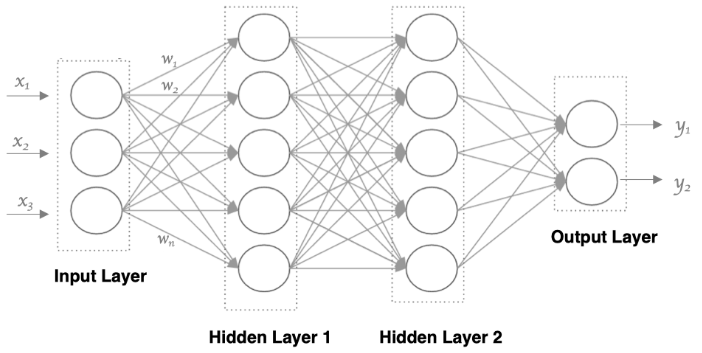
轻量化YOLOv7系列:结合G-GhostNet | 适配GPU,华为诺亚提出G-Ghost方案升级GhostNet
- 需要修改的代码
- models/GGhostRegNet.py代码
- 创建yaml文件
- 测试是否创建成功
本文提供了改进 YOLOv7注意力系列包含不同的注意力机制以及多种加入方式,在本文中具有完整的代码和包含多种更有效加入YOLOv8中的yaml结构,读者可以获取到注意力加入的代码和使用经验,总有一种适合你和你的数据集。
🗝️YOLOv7实战宝典--星级指南:从入门到精通,您不可错过的技巧
-- 聚焦于YOLO的 最新版本, 对颈部网络改进、添加局部注意力、增加检测头部,实测涨点💡 深入浅出YOLOv7:我的专业笔记与技术总结
-- YOLOv7轻松上手, 适用技术小白,文章代码齐全,仅需 一键train,解决 YOLOv7的技术突破和创新潜能❤️ YOLOv8创新攻略:突破技术瓶颈,激发AI新潜能"
-- 指导独特且专业的分析, 也支持对YOLOv3、YOLOv4、YOLOv5、YOLOv6等网络的修改🎈 改进YOLOv7专栏内容《YOLOv7实战宝典》📖 ,改进点包括: 替换多种骨干网络/轻量化网络, 添加40多种注意力, 包含自注意力/上下文注意力/自顶向下注意力机制/空间通道注意力/,设计不同的网络结构,助力涨点!!!

YOLOv7注意力系列包含不同的注意力机制
需要修改的代码
models/GGhostRegNet.py代码
- 新建这个文件,放入网络代码
import torch
import torch.nn as nn
import torch.nn.functional as F
def conv3x3(in_planes, out_planes, stride=1, groups=1, dilation=1):
"""3x3 convolution with padding"""
return nn.Conv2d(in_planes, out_planes, kernel_size=3, stride=stride,
padding=dilation, groups=groups, bias=False, dilation=dilation)
def conv1x1(in_planes, out_planes, stride=1):
"""1x1 convolution"""
return nn.Conv2d(in_planes, out_planes, kernel_size=1, stride=stride, bias=False)
class GHOSTBottleneck(nn.Module):
expansion = 1
__constants__ = ['downsample']
def __init__(self, inplanes, planes, stride=1, downsample=None, group_width=1,
dilation=1, norm_layer=None):
super(GHOSTBottleneck, self).__init__()
if norm_layer is None:
norm_layer = nn.BatchNorm2d
width = planes * self.expansion
# Both self.conv2 and self.downsample layers downsample the input when stride != 1
self.conv1 = conv1x1(inplanes, width)
self.bn1 = norm_layer(width)
self.conv2 = conv3x3(width, width, stride, width // min(width, group_width), dilation)
self.bn2 = norm_layer(width)
self.conv3 = conv1x1(width, planes)
self.bn3 = norm_layer(planes)
self.relu = nn.SiLU(inplace=True)
self.downsample = downsample
self.stride = stride
def forward(self, x):
identity = x
out = self.conv1(x)
out = self.bn1(out)
out = self.relu(out)
out = self.conv2(out)
out = self.bn2(out)
out = self.relu(out)
out = self.conv3(out)
out = self.bn3(out)
if self.downsample is not None:
identity = self.downsample(x)
out += identity
out = self.relu(out)
return out
# class LambdaLayer(nn.Module):
# def __init__(self, lambd):
# super(LambdaLayer, self).__init__()
# self.lambd = lambd
#
# def forward(self, x):
# return self.lambd(x)
class Stage(nn.Module):
def __init__(self, block, inplanes, planes, group_width, blocks, stride=1, dilate=False, cheap_ratio=0.5):
super(Stage, self).__init__()
norm_layer = nn.BatchNorm2d
downsample = None
self.dilation = 1
previous_dilation = self.dilation
self.inplanes = inplanes
if dilate:
self.dilation *= stride
stride = 1
if stride != 1 or self.inplanes != planes:
downsample = nn.Sequential(
conv1x1(inplanes, planes, stride),
norm_layer(planes),
)
self.base = block(inplanes, planes, stride, downsample, group_width,
previous_dilation, norm_layer)
self.end = block(planes, planes, group_width=group_width,
dilation=self.dilation,
norm_layer=norm_layer)
group_width = int(group_width * 0.75)
raw_planes = int(planes * (1 - cheap_ratio) / group_width) * group_width
cheap_planes = planes - raw_planes
self.cheap_planes = cheap_planes
self.raw_planes = raw_planes
self.merge = nn.Sequential(
nn.AdaptiveAvgPool2d(1),
nn.Conv2d(planes + raw_planes * (blocks - 2), cheap_planes,
kernel_size=1, stride=1, bias=False),
nn.BatchNorm2d(cheap_planes),
nn.SiLU(inplace=True),
nn.Conv2d(cheap_planes, cheap_planes, kernel_size=1, bias=False),
nn.BatchNorm2d(cheap_planes),
)
self.cheap = nn.Sequential(
nn.Conv2d(cheap_planes, cheap_planes,
kernel_size=1, stride=1, bias=False),
nn.BatchNorm2d(cheap_planes),
)
self.cheap_relu = nn.SiLU(inplace=True)
layers = []
# downsample = nn.Sequential(
# LambdaLayer(lambda x: x[:, :raw_planes])
# )
layers = []
layers.append(block(raw_planes, raw_planes, 1, downsample, group_width,
self.dilation, norm_layer))
inplanes = raw_planes
for _ in range(2, blocks - 1):
layers.append(block(inplanes, raw_planes, group_width=group_width,
dilation=self.dilation,
norm_layer=norm_layer))
self.layers = nn.Sequential(*layers)
def forward(self, input):
x0 = self.base(input)
m_list = [x0]
e = x0[:, :self.raw_planes]
for l in self.layers:
e = l(e)
m_list.append(e)
m = torch.cat(m_list, 1)
m = self.merge(m)
c = x0[:, self.raw_planes:]
c = self.cheap_relu(self.cheap(c) + m)
x = torch.cat((e, c), 1)
x = self.end(x)
return x
class GGhostRegNet(nn.Module):
def __init__(self, block, layers, widths, layer_number, num_classes=1000, zero_init_residual=True,
group_width=8, replace_stride_with_dilation=None,
norm_layer=None):
super(GGhostRegNet, self).__init__()
# ---------------------------------
self.layer_number = layer_number
# --------------------------------------
if norm_layer is None:
norm_layer = nn.BatchNorm2d
self._norm_layer = norm_layer
self.inplanes = widths[0]
self.dilation = 1
if replace_stride_with_dilation is None:
# each element in the tuple indicates if we should replace
# the 2x2 stride with a dilated convolution instead
replace_stride_with_dilation = [False, False, False, False]
if len(replace_stride_with_dilation) != 4:
raise ValueError("replace_stride_with_dilation should be None "
"or a 4-element tuple, got {}".format(replace_stride_with_dilation))
self.group_width = group_width
# self.conv1 = nn.Conv2d(3, self.inplanes, kernel_size=3, stride=2, padding=1,
# bias=False)
# self.bn1 = norm_layer(self.inplanes)
# self.relu = nn.ReLU(inplace=True)
if self.layer_number in [0]:
self.layer1 = self._make_layer(block, widths[0], layers[0], stride=1,
dilate=replace_stride_with_dilation[0])
if self.layer_number in [1]:
self.inplanes = widths[0]
if layers[1] > 2:
self.layer2 = Stage(block, self.inplanes, widths[1], group_width, layers[1], stride=1,
dilate=replace_stride_with_dilation[1], cheap_ratio=0.5)
else:
self.layer2 = self._make_layer(block, widths[1], layers[1], stride=1,
dilate=replace_stride_with_dilation[1])
if self.layer_number in [2]:
self.inplanes = widths[1]
self.layer3 = Stage(block, self.inplanes, widths[2], group_width, layers[2], stride=1,
dilate=replace_stride_with_dilation[2], cheap_ratio=0.5)
if self.layer_number in [3]:
self.inplanes = widths[2]
if layers[3] > 2:
self.layer4 = Stage(block, self.inplanes, widths[3], group_width, layers[3], stride=1,
dilate=replace_stride_with_dilation[3], cheap_ratio=0.5)
else:
self.layer4 = self._make_layer(block, widths[3], layers[3], stride=1,
dilate=replace_stride_with_dilation[3])
# self.avgpool = nn.AdaptiveAvgPool2d((1, 1))
# self.dropout = nn.Dropout(0.2)
# self.fc = nn.Linear(widths[-1] * block.expansion, num_classes)
for m in self.modules():
if isinstance(m, nn.Conv2d):
nn.init.kaiming_normal_(m.weight, mode='fan_out', nonlinearity='relu')
elif isinstance(m, (nn.BatchNorm2d, nn.GroupNorm)):
nn.init.constant_(m.weight, 1)
nn.init.constant_(m.bias, 0)
def _make_layer(self, block, planes, blocks, stride=1, dilate=False):
norm_layer = self._norm_layer
downsample = None
previous_dilation = self.dilation
if dilate:
self.dilation *= stride
stride = 1
if stride != 1 or self.inplanes != planes:
downsample = nn.Sequential(
conv1x1(self.inplanes, planes, stride),
norm_layer(planes),
)
layers = []
layers.append(block(self.inplanes, planes, stride, downsample, self.group_width,
previous_dilation, norm_layer))
self.inplanes = planes
for _ in range(1, blocks):
layers.append(block(self.inplanes, planes, group_width=self.group_width,
dilation=self.dilation,
norm_layer=norm_layer))
return nn.Sequential(*layers)
def _forward_impl(self, x):
if self.layer_number in [0]:
x = self.layer1(x)
if self.layer_number in [1]:
x = self.layer2(x)
if self.layer_number in [2]:
x = self.layer3(x)
if self.layer_number in [3]:
x = self.layer4(x)
return x
def forward(self, x):
return self._forward_impl(x)

- yolo里引用


创建yaml文件
# parameters
nc: 80 # number of classes
depth_multiple: 1.0 # model depth multiple
width_multiple: 1.0 # layer channel multiple
# anchors
anchors:
- [12,16, 19,36, 40,28] # P3/8
- [36,75, 76,55, 72,146] # P4/16
- [142,110, 192,243, 459,401] # P5/32
# yolov7_MY backbone
backbone:
# [from, number, module, args]
[[-1, 1, Conv, [32, 3, 1]], # 0
[-1, 1, Conv, [64, 3, 2]], # 1-P1/2
[-1, 1, Conv, [64, 3, 1]],
[-1, 1, Conv, [128, 3, 2]], # 3-P2/4
[-1, 1, Conv, [48, 1, 1]],
# [-2, 1, Conv, [64, 1, 1]],
# [-1, 1, Conv, [64, 3, 1]],
# [-1, 1, Conv, [64, 3, 1]],
# [-1, 1, Conv, [64, 3, 1]],
# [-1, 1, Conv, [64, 3, 1]],
# [[-1, -3, -5, -6], 1, Concat, [1]],
# [-1, 1, Conv, [256, 1, 1]], # 11
[-1, 1, GGhostRegNet, [48, 0]], # 5
[-1, 1, MP, []],
[-1, 1, Conv, [48, 1, 1]],
[-3, 1, Conv, [48, 1, 1]],
[-1, 1, Conv, [48, 3, 2]],
[[-1, -3], 1, Concat, [1]], # 16-P3/8
[-1, 1, Conv, [96, 1, 1]],
# [-2, 1, Conv, [128, 1, 1]],
# [-1, 1, Conv, [128, 3, 1]],
# [-1, 1, Conv, [128, 3, 1]],
# [-1, 1, Conv, [128, 3, 1]],
# [-1, 1, Conv, [128, 3, 1]],
# [[-1, -3, -5, -6], 1, Concat, [1]],
# [-1, 1, Conv, [512, 1, 1]], # 24
[-1, 3, GGhostRegNet, [96, 1]], # 12
[-1, 1, MP, []],
[-1, 1, Conv, [96, 1, 1]],
[-3, 1, Conv, [96, 1, 1]],
[-1, 1, Conv, [96, 3, 2]],
[[-1, -3], 1, Concat, [1]], # 29-P4/16
[-1, 1, Conv, [240, 1, 1]],
# [-2, 1, Conv, [256, 1, 1]],
# [-1, 1, Conv, [256, 3, 1]],
# [-1, 1, Conv, [256, 3, 1]],
# [-1, 1, Conv, [256, 3, 1]],
# [-1, 1, Conv, [256, 3, 1]],
# [[-1, -3, -5, -6], 1, Concat, [1]],
# [-1, 1, Conv, [1024, 1, 1]], # 37
[-1, 5, GGhostRegNet, [240, 2]], # 19
[-1, 1, MP, []],
[-1, 1, Conv, [240, 1, 1]],
[-3, 1, Conv, [240, 1, 1]],
[-1, 1, Conv, [240, 3, 2]],
[[-1, -3], 1, Concat, [1]], # 42-P5/32
[-1, 1, Conv, [528, 1, 1]],
# [-2, 1, Conv, [256, 1, 1]],
# [-1, 1, Conv, [256, 3, 1]],
# [-1, 1, Conv, [256, 3, 1]],
# [-1, 1, Conv, [256, 3, 1]],
# [-1, 1, Conv, [256, 3, 1]],
# [[-1, -3, -5, -6], 1, Concat, [1]],
# [-1, 1, Conv, [1024, 1, 1]], # 50
[-1, 7, GGhostRegNet, [528, 3]], # 26
]
# yolov7_MY head
head:
[[-1, 1, SPPCSPC, [512]], # 27
[-1, 1, Conv, [256, 1, 1]],
[-1, 1, nn.Upsample, [None, 2, 'nearest']],
[19, 1, Conv, [256, 1, 1]], # route backbone P4
[[-1, -2], 1, Concat, [1]],
[-1, 1, Conv, [256, 1, 1]],
[-2, 1, Conv, [256, 1, 1]],
[-1, 1, Conv, [128, 3, 1]],
[-1, 1, Conv, [128, 3, 1]],
[-1, 1, Conv, [128, 3, 1]],
[-1, 1, Conv, [128, 3, 1]],
[[-1, -2, -3, -4, -5, -6], 1, Concat, [1]],
[-1, 1, Conv, [256, 1, 1]], # 39
[-1, 1, Conv, [128, 1, 1]],
[-1, 1, nn.Upsample, [None, 2, 'nearest']],
[12, 1, Conv, [128, 1, 1]], # route backbone P3
[[-1, -2], 1, Concat, [1]],
[-1, 1, Conv, [128, 1, 1]],
[-2, 1, Conv, [128, 1, 1]],
[-1, 1, Conv, [64, 3, 1]],
[-1, 1, Conv, [64, 3, 1]],
[-1, 1, Conv, [64, 3, 1]],
[-1, 1, Conv, [64, 3, 1]],
[[-1, -2, -3, -4, -5, -6], 1, Concat, [1]],
[-1, 1, Conv, [128, 1, 1]], # 51
[-1, 1, MP, []],
[-1, 1, Conv, [128, 1, 1]],
[-3, 1, Conv, [128, 1, 1]],
[-1, 1, Conv, [128, 3, 2]],
[[-1, -3, 39], 1, Concat, [1]],
[-1, 1, Conv, [256, 1, 1]],
[-2, 1, Conv, [256, 1, 1]],
[-1, 1, Conv, [128, 3, 1]],
[-1, 1, Conv, [128, 3, 1]],
[-1, 1, Conv, [128, 3, 1]],
[-1, 1, Conv, [128, 3, 1]],
[[-1, -2, -3, -4, -5, -6], 1, Concat, [1]],
[-1, 1, Conv, [256, 1, 1]], # 64
[-1, 1, MP, []],
[-1, 1, Conv, [256, 1, 1]],
[-3, 1, Conv, [256, 1, 1]],
[-1, 1, Conv, [256, 3, 2]],
[[-1, -3, 27], 1, Concat, [1]],
[-1, 1, Conv, [512, 1, 1]],
[-2, 1, Conv, [512, 1, 1]],
[-1, 1, Conv, [256, 3, 1]],
[-1, 1, Conv, [256, 3, 1]],
[-1, 1, Conv, [256, 3, 1]],
[-1, 1, Conv, [256, 3, 1]],
[[-1, -2, -3, -4, -5, -6], 1, Concat, [1]],
[-1, 1, Conv, [512, 1, 1]], # 77
[51, 1, RepConv, [256, 3, 1]],
[64, 1, RepConv, [512, 3, 1]],
[77, 1, RepConv, [1024, 3, 1]],
[[78,79,80], 1, IDetect, [nc, anchors]], # Detect(P3, P4, P5)
]
测试是否创建成功


这里是引用



















